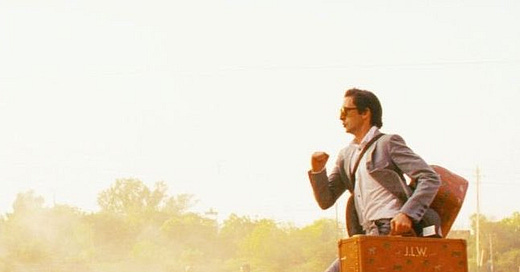Here’s an exercise and an explanation.
Next time you’re on a bus journey, along a crowded high street, get your phone out, point it sideways, and take exactly ten seconds of slo-mo video.
Do this while the bus is moving, so you get a tracking shot.
Press the camera up against the glass. Hopefully it isn’t juddering too much. Aim to catch the people on the pavement.
As you’re 10 filming, 9 8 7 6, look at the street, 5 4 3, not the screen, 2 1.
When you’re done, 0, watch the video back immediately. If something has gone wrong, meaning you can’t see the people clearly, or there aren’t any people, do it again. But if it seems okay, leave it.
(Doesn’t have to be a bus, but probably better than a car.)
Now, try to remember someone you saw — someone you recorded. Write a few lines about them. Scribble these in your notebook or type them into your Notes app.
The exercise is not to describe their appearance, but to try and imagine a situation your chosen person might be in.
This doesn’t need to be melodramatic or extreme. But it does need to be something that interests you.
Don’t just write —
Rebekah, 29, on her way to buy pesto at Aldi.
Make up something like —
Rebekah, 29, anxiously carrying her great-grandmother’s diamond tiara in her backpack. Not stolen.
(But pesto is fascinating, I hear you say. Much more interesting than tiaras. Which flavour? Red or green?)
(Okay, go with the pesto, if you insist.)
(Weirdo.)
Now set a reminder on your phone for a time you think you’ll be able to do a bit more writing.
When that time comes, watch the slo-mo street video back just once.
Look again at the person you’ve chosen — in this case, Rebekah.
Write a whole notebook page about them.
This time you can, if you want, describe how they look, what they’re wearing, how they walk. But you can also try to integrate the made-up situation you’ve made up with the real details of their appearance.
That’s all.
You can now delete the video.
If you’d like to extend the exercise, look through something fictional you’ve written recently. Compare your description of your slo-mo person with a description you’ve done of a made-up character of yours.
How does the tone differ? Are there more physical details in one or the other? Can you steal something from your exercise, to give your fiction a little more throb or texture? Should you cut something from your fiction, to give what’s there a little more breathing space?
Explanation.
It seems to me that the slo-mo view of the world — the street outside the bus window — is closer to how we (or at least I) see things than the real-time version.
When I’m paying attention, properly paying attention, it’s not that I see things unfolding at a slower pace. I just keep up with them better. I pick out more details in each moment, and follow through on a greater number of associations.
I’m not claiming a superpower here. Just trying to make an observation about how I observe.
There are lots of technologies we carry around with us on our phones that aren’t useful for thinking, watching, writing — those interruptions and distractions and daily time-sumps. But there are some that we can use, now and again, to get more out of our time.





Yesterday I watched the Olympics synchronised diving event on TV. The high-res, multi-angle, slo-mo replays helped my armchair expertise immensely (and rekindled my fascination with flicky-flacky 'comfort flannels'). The coaches also reviewed the videos with their competitors after each dive.
But then the commentator said the judges didn't use any slo-mo footage. They just... 'judged', based on a lingering retinal impression and countless years of experience watching thousands of dives. Now that's an expert eye.